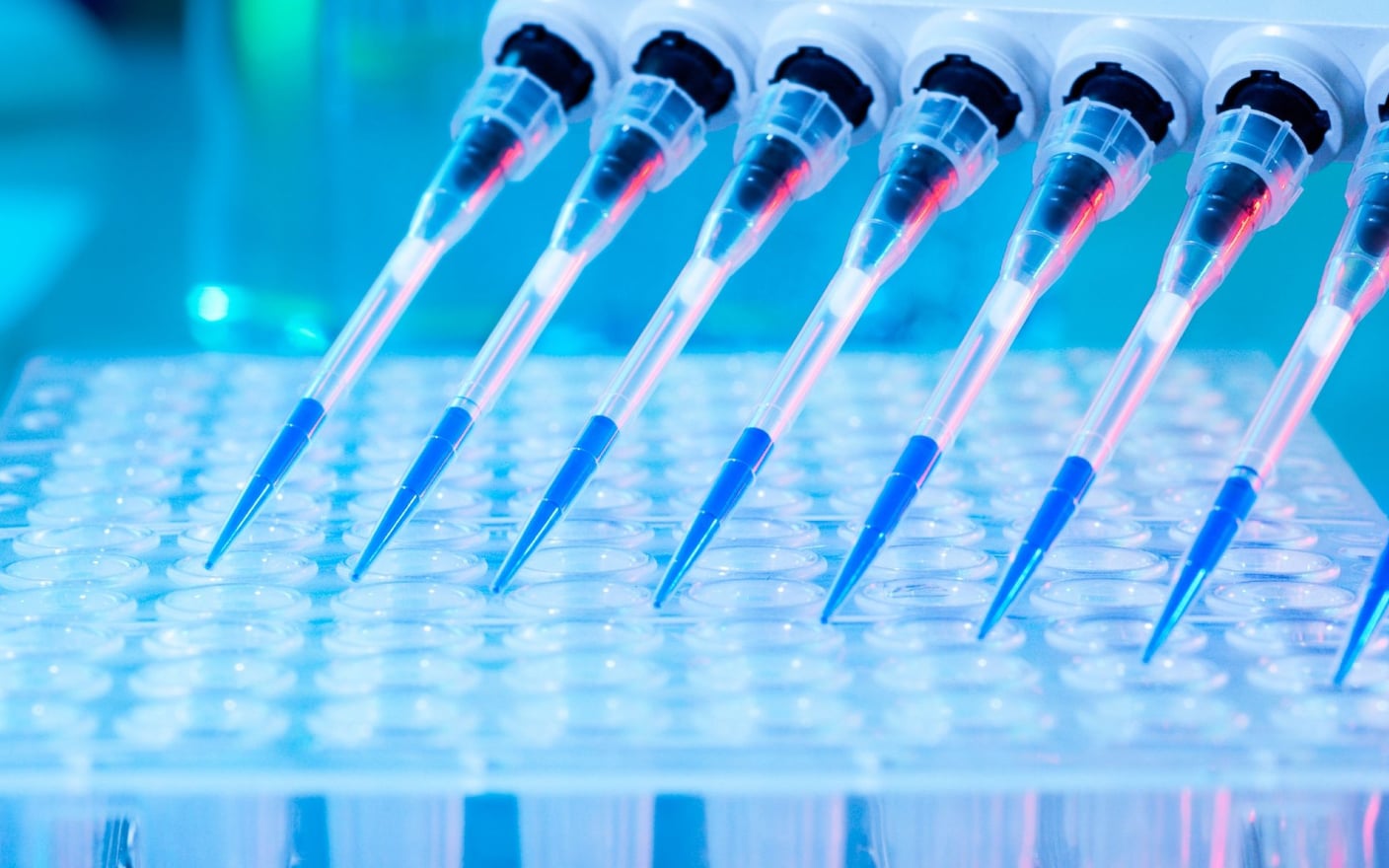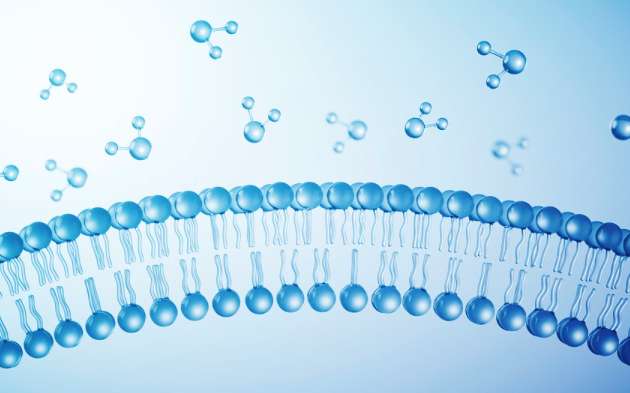Over the past five years, Proteolysis-Targeting Chimera (PROTAC)* has gradually become one of the most popular small molecules due to its unique mechanism of action. However, there are many obstacles to overcome in the research on its druggability. One of the most discussed challenges is that PROTAC, unlike traditional small molecule drugs, does not meet the classical Rule of Five. Scientists note that PROTAC violates the tenets of medicinal chemistry and acts as a redefined small molecule compound. Consequently, poor oral absorption is a common issue for PROTAC compounds. Notably, to screen PROTAC molecules that have a certain level of oral bioavailability, it is necessary to characterize or optimize various characteristics, including PROTAC permeability, solubility, lipophilicity, metabolic stability, etc. This article discusses the PROTAC molecules’ permeability and solubility that are closely related to oral absorption, providing ideas for further research and development of PROTAC molecules.

Figure 1. PROTAC’s mechanism of action.1
PROTAC molecules do not meet Lipinski's Rule of Five
PROTAC consists of three key structural parts: a ligand binding the target protein; a ligand binding the E3 ubiquitin ligases; and a linker connecting the two ligands.1 According to these structural features, the molecular weight of PROTAC is usually high, typically more than 700 Da. As a point of reference, if high bioavailability is desired, then an oral small-molecule drug should generally meet Lipinski's Rule of Five:
1. The molecular weight is less than 500;
2. No more than 5 hydrogen bond donors
3. No more than 10 hydrogen bond acceptors
4. Octanol–water partition coefficient log P not greater than 5
5. No more than 10 rotatable bonds
However, PROTAC molecules hardly meet the Rule of Five and are even very different from molecules with good druggability. Vasanthanathan et al.2 compared the chemical properties of PROTAC molecules based on different E3 ligases with oral drugs included in Drugbank, finding them to be in different regions. Additionally, the properties of PROTAC were closely related to the types of E3 ligases. It has been reported that the most commonly utilized E3 ligases for PROTAC mainly include CRBN, VHL, cIAP and MDM2, with CRBN and VHL being the most frequently employed. In the figure below, the PROTAC (green) based on VHL is far away from the oral drug space and it has been reported that the bioavailability of such PROTAC is indeed low. In contrast, the PROTAC (red) based on CRBN E3 ligase is closer to the oral drug space. The two PROTAC molecules (ARV-110 and ARV-471) which have been clinical phase II are the ligands of CRBN E3 ligase. This may indicate that the PROTACs that are closer to the "Rule of Five" are more likely to exhibit better pharmacokinetic properties such as PROTAC permeability and solubility.

Figure 2. Comparison of chemical properties of PROTAC molecules with oral drugs included in Drugbank.2
Blue circles represent oral drugs included in Drugbank (n = 888), red, green and grey circles represent PROTAC of CRBN, VHL and other E3 ligases (n = 2082) respectively, and ARV-110 (1) and ARV-471 (2) are in the blue box in Figure A
How to address the challenges of PROTAC solubility?
Many researches have shown that the in vitro solubility and permeability of drugs closely correlate to the degree of drug absorption in the human body. Drugs with high solubility and permeability often have better oral absorption.3 Early evaluation of solubility and permeability is helpful for screening compounds.
Drug absorption occurs in the gastrointestinal tract. This means that attention should also be paid to the solubility of PROTAC in a physiological solution. It has been reported that the solubility of PROTAC molecules significantly improves in fasted-state simulated intestinal fluid (FaSSIF) and fed-state simulating intestinal fluid (FeSSIF), with optimal solubility observed in FeSSIF. The clinical trial design of ARV-110 and ARV-471 published by Arvinas disclosed that the phase I clinical administration modes of these two PROTAC molecules are both done "once daily with food." Our study also found that postprandial administration increased the exposure of some PROTAC molecules in animals. This suggests that the in vivo pharmacokinetics of PROTAC may obtain better in vivo drug exposure via postprandial administration.

Figure 3. PROTAC Solubility molecules in different buffer solutions.4
Another way to solve the PROTAC solubility problem is to use formulation means to optimize the drug delivery formulation. Studies have shown that using amorphous solid dispersions (such as spray drying, hot melt extrusion), nano delivery systems, self-emulsifying delivery systems or early screening of solvents to clarify the formulation can help increase the in vivo exposure. With rich experience in preclinical formulation screening, the in vivo PK preclinical formulation team from WuXi AppTec DMPK can select appropriate solvents to enhance compound exposure based on compound properties.
How to address the challenges of PROTAC permeability?
Permeability is another key parameter that impacts drug absorption. The common models for in vitro permeation research include Caco-2, MDCK, LLC-PK1, and PAMPA. When researching PROTAC permeability, PAMPA is not recommended as a suitable in vitro permeability model due to the restrictions of its non-cellular structure. However, Caco-2, MDR1-MDCK or LLC-PK1 cells can be applied to research on the in vitro permeability of PROTAC. It should be noted that PROTAC molecules showed low permeability regardless of the model used (Figure 4).

Figure 4. Molecular weight and permeability of PROTAC.1
a) The correlation between PAMPA and LLC-PK1, the area within the dotted line represents low permeability; b) Relations between P-gp efflux ratio and molecular weight; c) The permeability of compounds with different molecular weights in LLC-PK1 cell model, in which molecular weight less than 650 is a single ligand, and molecular weight more than 650 is a complete PROTAC; d) The permeability of compounds with different molecular weights in the PAMPA model, in which molecular weight less than 650 is an individual ligand, and molecular weight more than 650 is an intact PROTAC.
In addition to low permeability, the low solubility and high non-specific binding also lead to the insufficient recovery of most PROTAC molecules in permeability models. Low recovery means that it is impossible to judge whether the permeability data are accurate, thus greatly reducing the credibility of the data. WuXi AppTec DMPK carried out additional validation studies to solve this problem. The recovery of PROTAC molecules in the Caco-2 cell experiment can be greatly improved by using a transfer buffer with BSA or a physiological solution as the transfer buffer. At present, the improved Caco-2 cell system has been recommended for research on in vitro PROTAC permeability.
Notably, PROTAC compounds generally have long structures, high molecular weight, polarity and a large number of rotatable bonds. Research conducted by Atilaw et al.5 shows that a PROTAC acts like a chameleon in that its conformation changes with the environment. In solutions that mimic extra- (DMSO) or intracellular (DMSO mixed with water by 10:1), PROTAC molecules present an elongated shape and have a high molecular polarity. However, in the solution that mimics a cell membrane interior (chloroform), PROTAC molecules are folded by forming intramolecular hydrogen bonds and π−π interaction, thus becoming a molecule with a smaller polar surface area. In other words, it shifts from the conformation of a polar molecule to the conformation of a non-polar molecule. This finding suggests that the PROTAC permeability may be related to whether it can form a conformation with a small polar surface area during the permeation process.

Figure 5. Conformation change of PROTAC in different solutions.5
Conclusion
For conventional small molecules, there is often a good correlation between in vitro permeability and in vivo absorption. However, for PROTAC molecules, there is no substantial data to confirm this correlation. Research has also determined that PROTAC assessed as low permeability by in vitro research may also exhibit good oral bioavailability in animals. In addition, Atilaw et al. proposed the "chameleon" property of PROTAC, which suggests the complexity of such molecular penetration mechanisms. Therefore, it is recommended to carefully apply the in vitro permeability data for the early screening of PROTAC. In addition, it is recommended to screen PROTAC molecules with good oral administration absorption by combining in vitro research with in vivo pharmacokinetic data. In the in vivo pharmacokinetic research , the appropriate feeding mode should be selected by comparing the differences between fasted state and the fed state. Meanwhile, the use of a clear formulation without precipitation risk in the gastrointestinal tract for early screening PK study is recommended. We look forward to more PROTAC data published to help predict in vivo absorption using the results of in vitro PRROTAC permeability and solubility research.
Click here to learn more about the strategies for PROTAC, or talk to a WuXi AppTec expert today to get the support you need to achieve your drug development goals.
*PROTAC® is a registered trademark of Arvinas. In this article, PROTAC specifically refers to the abbreviation of Proteolysis-Targeting Chimera as therapeutic modalities.
Authors: Liping Ma, Chengyuan Li, Jing Jin
Committed to accelerating drug discovery and development, we offer a full range of discovery screening, preclinical development, clinical drug metabolism, and pharmacokinetic (DMPK) platforms and services. With research facilities in the United States (New Jersey) and China (Shanghai, Suzhou, Nanjing, and Nantong), 1,000+ scientists, and over fifteen years of experience in Investigational New Drug (IND) application, our DMPK team at WuXi AppTec are serving 1,500+ global clients, and have successfully supported 1,200+ IND applications.
Reference
1 Cantrill C, Chaturvedi P, Rynn C, Petrig Schaffland J, Walter I, Wittwer MB. Fundamental aspects of DMPK optimization of targeted protein degraders. Drug Discov Today. 2020 Jun;25(6):969-982. doi: 10.1016/j.drudis.2020.03.012. Epub 2020 Apr 13. PMID: 32298797.
2 Vasanthanathan P, Jan K. PROTAC cell permeability and oral bioavailability: a journey into uncharted territory. Future Med Chem. 2021 Sep 29. Epub 2021 Sep 29.
3 Pade V, Stavchansky S. Link between drug absorption solubility and permeability measurements in Caco-2 cells. Journal of Pharmaceutical Sciences. 1998 Dec;87(12):1604-1607. DOI: 10.1021/js980111k. PMID: 10189274.
4 Pike A, Williamson B, Harlfinger S, Martin S, McGinnity DF. Optimising proteolysis-targeting chimeras (PROTACs) for oral drug delivery: a drug metabolism and pharmacokinetics perspective. Drug Discov Today. 2020 Jul 18:S1359-6446(20)30293-2. doi: 10.1016/j.drudis.2020.07.013. Epub ahead of print. PMID: 32693163.
5 Atilaw Y, Poongavanam V, Svensson Nilsson C, Nguyen D, Giese A, Meibom D, Erdelyi M, Kihlberg J. Solution Conformations Shed Light on PROTAC Cell Permeability. ACS Med Chem Lett. 2020 Dec 25;12(1):107-114. doi: 10.1021/acsmedchemlett.0c00556. PMID: 33488971; PMCID: PMC7812666.
Related Services and Platforms




-

 In Vitro ADME ServicesLearn More
In Vitro ADME ServicesLearn More -

 Novel Drug Modalities DMPK Enabling PlatformsLearn More
Novel Drug Modalities DMPK Enabling PlatformsLearn More -

 Physicochemical Property StudyLearn More
Physicochemical Property StudyLearn More -

 Permeability and Transporter StudyLearn More
Permeability and Transporter StudyLearn More -

 Drug Distribution and Protein Binding StudiesLearn More
Drug Distribution and Protein Binding StudiesLearn More -

 Metabolic Stability StudyLearn More
Metabolic Stability StudyLearn More -

 Drug Interactions StudyLearn More
Drug Interactions StudyLearn More
Stay Connected
Keep up with the latest news and insights.











